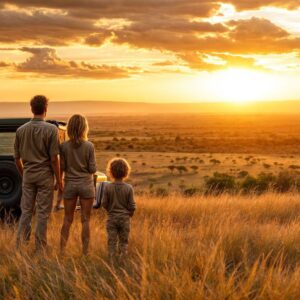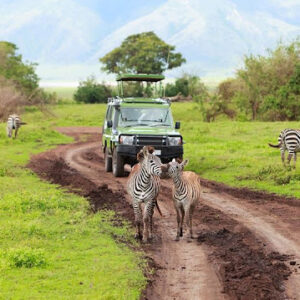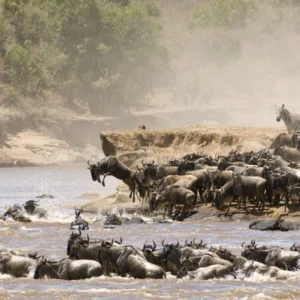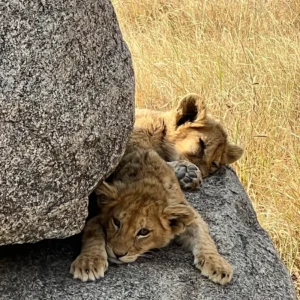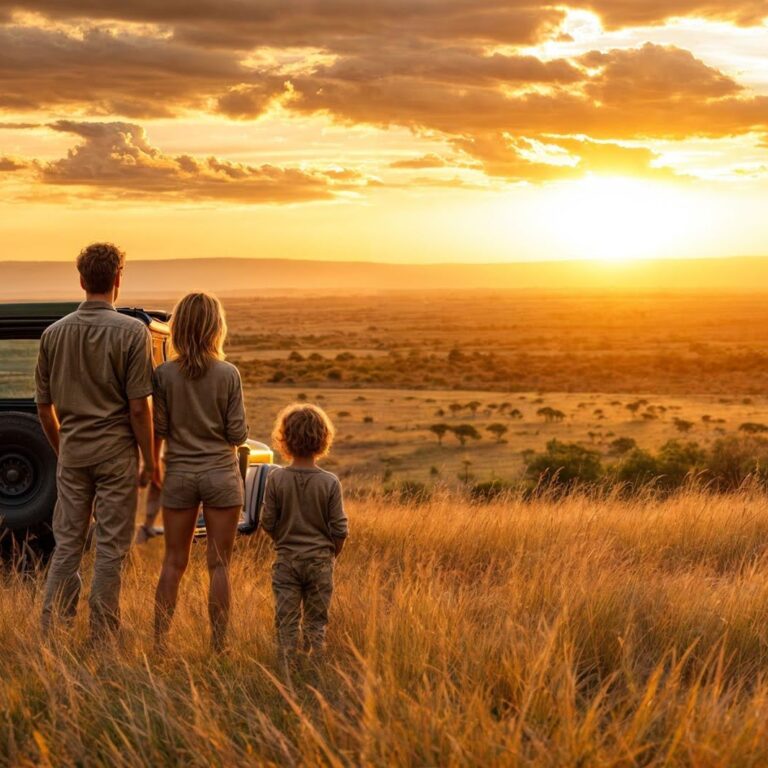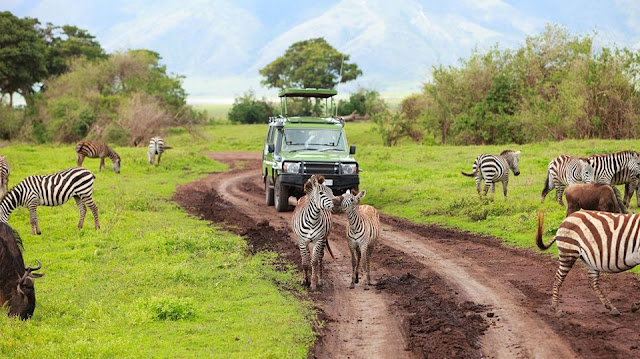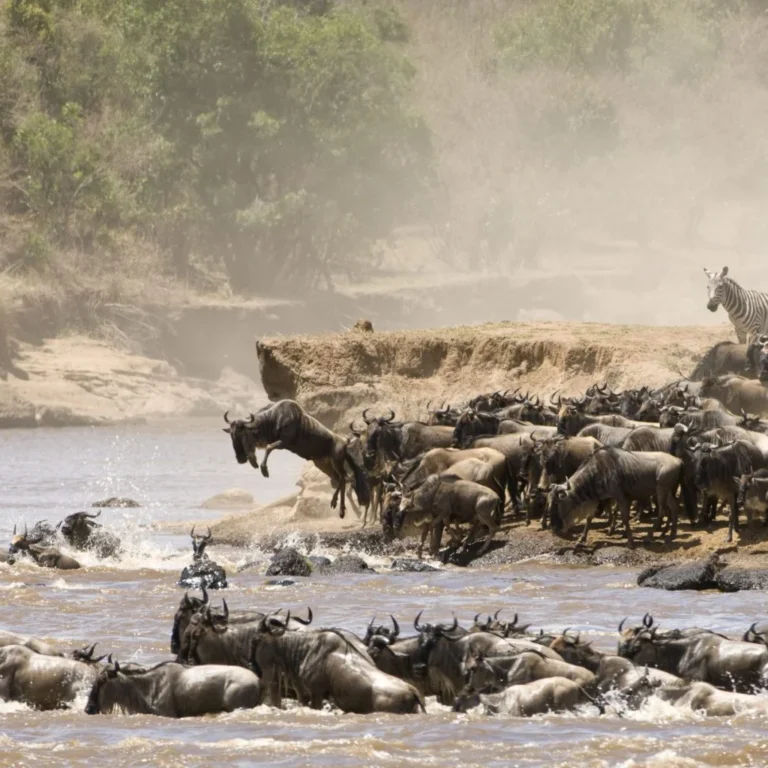The Guide to Tanzania Photographic Safaris.
A Tanzania is widely regarded as one of the most extraordinary destinations for photographic safaris, offering some of the most stunning landscapes and rich wildlife encounters in Africa. Whether you’re an amateur photographer or a seasoned professional, a photographic safari in Tanzania presents unparalleled opportunities to capture nature in its rawest form. This guide will delve into why Tanzania is the ultimate destination for photographers, what to expect during a photographic safari, and how to make the most of your experience.
Why Choose Tanzania for Your Photographic Safari?
Tanzania stands out as the prime African safari destination due to its exceptional natural beauty and the diversity of wildlife found across its national parks. From the endless plains of the Serengeti to the iconic Ngorongoro Crater, Tanzania is a haven for wildlife photography. Its unparalleled landscapes, including vast savannahs, lush forests, and breathtaking mountain backdrops, provide a wide variety of backdrops for every shot during African Photographic Safaris.
One of the key features that sets Tanzania apart is the sheer density of wildlife Tanzania Photo Safaris capture the magic of Africa. The Serengeti, in particular, hosts the famous Great Migration, where millions of wildebeest and zebras journey across the plains in search of food and water, providing a mesmerizing spectacle that is a dream for wildlife photographers. The Ngorongoro Crater, a UNESCO World Heritage site, offers a unique ecosystem where the diverse animal species are confined within the crater’s boundaries, offering fantastic opportunities for close-up shots of animals like lions, elephants, and rhinos.
Best Time for a Photographic Safari in Tanzania
Timing plays a critical role in the success of a photographic safari. The best months for wildlife photography in Tanzania are during the dry seasons, which are typically from June to October. During this time, animals are easier to spot as they gather around water sources. And the foliage is less dense, providing clearer views for capturing stunning photographs. This period also coincides with the Great Migration in the Serengeti. Where photographers can capture dramatic moments of predators and prey.
However, the rainy season, from November to April, also offers its own advantages. While it may seem counterintuitive, the lush green landscapes during the rainy season create rich. Vibrant backdrops that contrast beautifully with the animals. Additionally, wildlife such as birds are more active, and the lower number of tourists means you can have a more intimate experience with nature and fewer crowds to disrupt your shots.
Choosing the Right Safari for Photographers
When booking a photographic safari, it’s important to select a tour operator that specializes in photography. While many general safari companies offer photography packages, not all are created equal. A dedicated photographic safari will ensure that the vehicles are equipped with the right gear. Such as pop-up roofs for unobstructed views and more spacious seating for comfort during long days in the bush.
Experienced photographic guides are also a must. These guides are often passionate photographers themselves and know how to position vehicles to ensure the best light and angles for capturing the perfect shot. They will also help you understand animal behavior, which is essential for anticipating key moments. Such as when predators stalk their prey or when animals engage in social behavior like grooming or playing.
Top Locations in Tanzania for Photographic Safaris
Tanzania offers stunning landscapes for photographic safaris, from the iconic Serengeti, where vast plains teem with wildlife, to the Ngorongoro Crater’s rich biodiversity. The Selous Game Reserve and Ruinsori Mountains provide untamed beauty, land the perfect shot on a Tanzanian Photo Safari while the coastal Zanzibar offers vibrant culture and seascapes. Each location offers unique perspectives, ensuring photographers capture Africa’s wild splendor in breathtaking detail.
Serengeti National Park
The Serengeti is undoubtedly one of the most iconic safari destinations in the world. Its vast, golden plains stretch as far as the eye can see. Dotted with acacia trees and dramatic rock outcrops known as kopjes. The park is home to an abundance of wildlife. Including the Big Five (lion, leopard, elephant, buffalo, and rhino) as well as cheetahs, giraffes, zebras, and wildebeests. The Serengeti’s Tanzania photographic safaris photos ever-changing landscapes provide the perfect canvas for photographers. Capture action shots of predator-prey interactions, dramatic sunsets, and panoramic views of the savannah.
Ngorongoro Crater
The Ngorongoro Crater, often referred to as the “Garden of Eden,” is another essential stop for any photographer. This natural caldera, the largest unbroken crater in the world Tanzania photo tours. Is home to an incredible diversity of wildlife, including endangered species such as the black rhino. The crater’s unique ecosystem makes it an excellent place to photograph animals in close quarters. With lush greenery and a mix of open plains providing varied backdrops. The stunning landscape, with its steep crater walls, offers breathtaking panoramic shots.
Tarangire National Park
Explore Tarangire is lesser-known than the Serengeti or Ngorongoro Crater, but it is a hidden gem for photographers. Famous for its towering baobab trees and large elephant herds, Tarangire offers a more intimate safari experience Africa photo safaris. The park’s mix of swamps, woodlands, and savannahs provides ample opportunities for diverse wildlife photography. The elephants here are particularly photogenic, and the park also attracts large herds of wildebeest, zebras, and impalas, as well as predators like lions and cheetahs.
Lake Manyara National Park
Discover Lake Manyara is renowned for its diverse birdlife, particularly flamingos, which can be found in large numbers around the lake during the wet season. The park’s landscape is equally diverse, with forested areas, swamps, and open plains like National Geographic Africa photo safari. It is home to a variety of wildlife, including lions that are often spotted lounging in trees. The park’s variety of habitats makes it an excellent location for a wide range of photographic opportunities, from birdwatching to capturing the iconic tree-climbing lions.
Arusha National Park
Is a hidden gem for photographers, offering diverse landscapes from lush rainforests to open savannahs. Located near Mount Meru, the park is home to abundant wildlife, including giraffes, zebras, and diverse bird species. Its stunning backdrop, with Mount Meru towering in the distance, provides a unique setting for photography. The park’s smaller size and varied ecosystems allow photographers to capture a wide range of wildlife and scenic shots in a relatively short time during Tanzania photographic safaris tour.
Tanzania Photography Tips for a Successful Safari
To ensure you get the best photographs during your safari, here are some useful tips:
Use a telephoto lens: A telephoto lens (200mm or higher) will allow you to get close-up shots of wildlife without disturbing them.
Early morning and late afternoon light: The golden hour, just after sunrise and before sunset, provides soft, warm light that enhances the quality of your photos. This is also the time when animals are most active.
Patience is key: Wildlife photography requires patience. Animals may not always behave as expected, so take your time to observe and anticipate the right moment to capture.
Focus on the eyes: In wildlife photography, the eyes are the window to the soul. Capturing animals with their eyes sharp and in focus will add depth and emotion to your images.
Shoot in raw format: Shooting in raw allows for greater flexibility in post-processing, especially when adjusting lighting or color balance.
Tanzania Photographic Safaris Prices and Costs
A Tanzania offers a range of pricing options for photographic safaris, depending on the length of the trip, the level of luxury, and the locations visited. Your Tanzania Photographic Safaris Prices typically start from around $550 to $900 per day for mid-range safaris, including a guide, transportation, and accommodation. Luxury Tanzania Photographic Safaris can range from $790 to $2,500 per day or more, offering exclusive accommodations, private vehicles, and experienced photography guides. Additionally, special permits for parks like the Serengeti or Ngorongoro Crater may add extra fees.
Tanzania Photographic Safaris Reviews
Tanzania’s photographic safaris are highly rated by travelers, especially for their stunning landscapes and abundant wildlife. Many reviewers highlight the exceptional guiding services. Particularly from photography-focused guides who are knowledgeable about both wildlife behavior and camera techniques. The Serengeti’s Great Migration and Ngorongoro Crater’s wildlife density are often mentioned as highlights. However, some travelers note that costs can be high, particularly for luxury experiences. But the value is seen in the exceptional photographic opportunities and once-in-a-lifetime experiences.
Tanzania Photographic Safaris Map
A Tanzania photographic safari map typically includes key wildlife destinations like Serengeti National Park. Ngorongoro Crater, Tarangire National Park, and Lake Manyara National Park. These areas are concentrated in the northern part of the country, easily accessible for safaris. A good map highlights not only the parks but also the best routes for capturing wildlife shots and scenic views, with recommendations for the optimal times to visit for photography.
Tanzania Photographic Safaris packages and special offers
Many tour operators offer tailored photographic safari packages with a focus on capturing the best wildlife moments. Tanzania Photographic Safaris packages and special offers often include private vehicles, photography guides, and accommodations ranging from mid-range lodges to luxury tented camps. Special offers may include discounts during off-peak seasons or packages designed around specific events, such as the Great Migration. Booking in advance often secures the best deals for photographers looking for personalized experiences.
Final Thought
A photographic safari in Tanzania offers unparalleled opportunities to capture the beauty of Africa’s wildlife in its natural habitat. From the vast plains of the Serengeti to the lush landscapes of Ngorongoro Crater. The country provides photographers with stunning backdrops and rich wildlife encounters. By choosing the right locations, timing your trip wisely. And equipping yourself with the proper photography gear, you can create stunning images that will last a lifetime.

